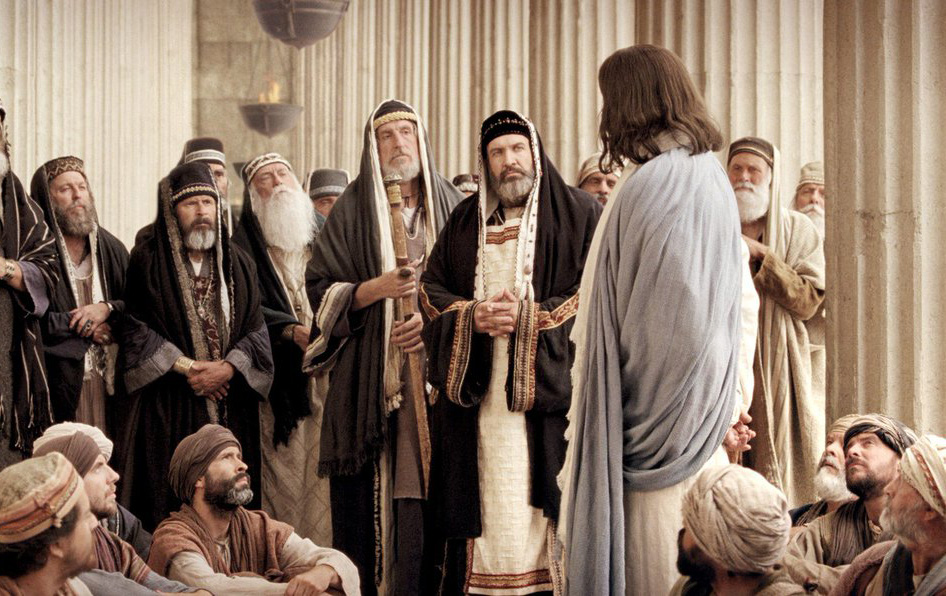Introduction
Certain NT passages present challenges to the modern reader in regard to their content and their implications for contemporary life. Two of these more difficult passages are the household codes of Ephesians and Colossians, which discuss the role of slaves in the early Christian households. These have come under significant scrutiny, particularly from more skeptical critics, as they appear to “endorse” slavery, or at the very least, indicate an archaic, irrelevant religion. The most pressing difficulty for the interpreter is “how can such instructions be reconciled with the liberating message of the cross?” By locating the passages in their socio-historical setting, I suggest that Paul’s advice to these slaves is in fact a radical challenge to reinterpret their present situation as an opportunity to worship Christ, or what I will call, a “hermeneutic of worship.”
Culture and context
Understanding a text requires us to understand the cultural context in which it was written. Therefore to fairly interpret the household codes, we must first explore their cultural context. At every point of its history and influence Rome was a slave society.[1] That is, slaves were integrated into every part of the culture, and economy. Slavery was deeply reflected in classical thought, which was permeated by the category of the slave.[2] Even from the earliest time of a child’s education, an important component of language learning was learning to order slaves around.[3]
For the ancients, a world without slaves was unimaginable. Romans could not remember a time in their history in which master-slave relationships did not exist, nor could they anticipate a decline of slavery.[4] In fact, Aristotle likens a slave-less society to one where “shuttles wove and quills played harps of themselves” (Aristotle, Pol. 1253B).
The institution of slavery was also deeply embedded in Roman law. A slave was defined as one who is legally in a state of servitude[5] and all people were distinguished as either free or slaves.[6] The law stated “Slavery is an institution of the Law of Nations by means of which anyone may subject one man to the control of another, contrary to nature” (Dig. 1.5.4.1). Moreover, to speak against slavery could be dangerous.
In Roman law it was illegal to persuade a slave do anything which would depreciate the value of him or her. This included soliciting a slave either to do something or to contrive something which is dishonorable, or persuade him to commit some injury or theft, or induce him to take flight, or to wander about, or to devote himself to magical arts, or to be riotous.[7]
Slaves could claim no human rights or privileges of any kind; they were kinless and were permitted no legally sanctioned familial bonds; nor could they own any property of their own.[8] They could not inherit goods or seek redress for injustices suffered and had to do whatever and go wherever their owners instructed.[9] Moreover, they were not allowed to serve in the army, as this was an activity for free citizens.[10] Again, Roman law stated that everything in the possession of the slave was in fact the property of the master, including anything the slave had acquired for him or herself.[11] In fact, the slave did not even have a name other than that given to them by their master.[12]
Generally speaking, slaves were equated to animals.[13] This is no more clearly reflected than in their sale and purchase. Sale of slaves took place at auctions, either at a seasonal market or a year-round slave emporium.[14] They would be placed on a rotating platform (catasta) in a single garment with a placard around their neck advertising where they came from, talents, and defects. If they were newly imported they would have a marking on their feet indicating whether they were a new or a veteran slave. The potential buyer could insist that the garment be removed to see if the seller was hiding any defects; they would then poke and prod the slave to see if they were the right product.[15] The purchase of a slave, in other words, was a transaction equivalent to the sale of livestock.[16]
The life of a slave was often one of brutal treatment, typically involving physical and sexual abuse.[17] The sexual exploitation of a slave was grounded in the notion of the slave as property;[18] in fact, it was one of the prerogatives of slave ownership.[19] Moreover, torture was the usual method used to interrogate slaves;[20] torture and execution services were available at a flat rate of HS4 in cities.[21]
While slaves were provided with the basic necessities of life—food, shelter, and clothing—this was only to the benefit of the master: good treatment logically resulted in good performance.[22] Slaves were considered part of the household and would have their own quarters in the house.[23] These, however, were only accessible through long narrow corridors. These areas were bland and undecorated as opposed to the guest areas and master’s quarters. The architecture designed to render the slave “invisible” to the visitor.[24]
Slaves could also receive a small allowance called a peculium. This was given to them by their master but always remained the master’s property.[25] This money could enable them to eventually purchase their freedom.[26] However, this was not an act of altruism on the part of the master; rather, it was a carrot on a stick, a means of controlling the slave. By permitting the slave to save for manumission, they would become more productive and the master would also receive back the purchase price for a replacement slave to serve in their place.[27]
In summary, a slave was utterly disempowered.[28] Slavery was defined as social death.”[29] It was a unilateral relationship intended to benefit one side only;[30] the slave was utterly powerless and the master expected complete submission from the slave.[31]
Christians as Slaves
Christianity originated in a slave culture and its first priority was the long journey of tenuous survival.[32] When we look at the NT we notice that Paul neither attacks nor defends slavery as an institution. Rather, he accepts it as a given fact of ancient life.[33] But given the embeddedness of slavery in every aspect of the culture, as well as the dangers of speaking against the institution, this should perhaps come as no surprise.
The early Christians were restricted in their ability to challenge slavery in the broader community. Abolition was simply not a part of their social agenda. However, change within the Christian community itself could, and, it appears, did occur, most apparently in the removal of its stigma.
One of the most frequent metaphors used in the New Testament to describe Christians is that of the slave. In 1 Thess 1:9, Paul recounts how they turned to God from idols to serve the living and true God. In Rom 6:18–22, Christians are said to have been slaves to sin but are now slaves of righteousness. In regard to this last example, Martin notes that Paul’s positive attitude towards slavery here is not generally found in moral philosophers.[34] In 1 Cor 6:20, Paul says that they are not their own, they were bought with a price, they should therefore glorify God in their body. The term “bought” here meaning redemption from slavery, the ordinary sale of a slave by one owner to another owner.[35]
Perhaps more significantly, however, Christian leaders are also referred to as slaves. In Rom 1:1, Phil 1:1, Gal 1:1, Paul refers to himself as a “slave of Christ” in apposition to “called apostles,” indicating that “slave” is a title of leadership.[36] In Acts 16:17, the demon-possessed girl cries out after Paul and Silas saying, “these are slaves of the most high God.” In Gal 6:17, Paul refers to the marks of Christ (stigmata—literally “tattoos”), which he bears on his body; these are reference to the humiliating and servile corporal punishment Paul has undergone as a slave of Christ.[37] In 1 Cor 4:1, he tells the Christians that they should refer to himself and Apollos as household slave managers of Christ and as those entrusted with the mysteries God has revealed.[38]
This attitude of slavery is considered an act of worship. Paul says to the Romans that they are to offer their bodies as living sacrifices; this is their spiritual worship (Rom 12:1). The reference to “offering their bodies” would resonate in a culture where slaves were seen as bodies for the master’s use. In other words, Paul was able to find in slavery something that was of ‘redeeming’ value for his theology.”[39] But this inversion of cultural values was not merely metaphorical; we see the same inversion take place when he addresses slaves themselves.
Dealing Directly with Slaves
One of the unique characteristics of Paul is that he addresses slaves directly. Greek and Roman ethical thinkers always worked within the limits of the cultivated elite;[40] however, Paul addresses himself directly to persons held in slavery, a practice unparalleled in other homiletic traditions.[41] In 1 Corinthians 7, he gives the following exhortation: “Were you a slave when called? Do not be concerned about it. (But if you can gain your freedom, avail yourself of the opportunity.) For he who was called in the Lord as a bondservant is a freedman of the Lord. Likewise he who was free when called is a bondservant of Christ” (1 Cor 7:21–23).
In this exhortation, the slave Christian is a freedman, a full human being, yet not detached from his patron, that is, Christ, who will care for him. As a freedman he owes reciprocal duties to Christ.[42] This is a twofold improvement: first, a freedperson has more status than a slave. Second, the metaphorical freedperson is in an even higher position that the freedperson of a human patron: the slave is the freedperson of the Lord.[43] Alternatively, Paul says that the free Christian is to consider that he is the slave of Christ who owns nothing and is subject to the direction of his owner.[44]
In summary, we can see that Paul presents quite a radical departure from the standard values of his culture and contemporaries. Christians, in particular, Christian leaders, are metaphorically in slavery to Christ. Slaves themselves are to consider their status in Christ as equal to those who are free. More importantly, perhaps, all Christians, whether real or metaphorical slaves, are to see their service to Christ as an act of worship (Rom 12:1). This, I suggest, is how we should understand Paul’s words in the household codes. Whilst Paul is insistent on maintaining the status quo for the sake of appearances, within his exhortations to the slaves is an encouragement to reinterpret their situation through a different paradigm, one of worship.
The Household Codes
In both Ephesians and Colossians, slaves are told to obey their earthly masters with fear and trembling, with sincerity of heart, and reverence for the Lord, just as they would obey Christ. This language is reminiscent of the command to the Philippians to work out their salvation with fear and trembling (Phil 2:12). Again, in both letters they are told to work with all their heart in whatever they do as working for the Lord, not human masters, remembering that they are slaves of Christ and it is him they are serving. By doing this they are told that they will receive an inheritance from the Lord as a reward for whatever good they do.
Paul’s language here is not dissimilar to his language elsewhere. That is, all Christians are metaphorically slaves of Christ and worship and serve Christ as His slaves. Irrespective of whether they are high or low status, slave or free, Christians are alike all in bondage to the same Lord. Slaves, therefore, though in reality slaves to an earthly master, are metaphorically slaves of Christ. This means that what they do to serve their earthly master is also done for the Lord. Paul, in other words, wants them to reinterpret their present situation and service, difficult as it may be, as a form of worship. This, however, comes with a reward.
Conclusion
In conclusion, ancient slavery was a fact of everyday life and a brutal reality for many. Christians were not able to, nor did they apparently intend to overturn the institution. However, within the Christian community itself, all members, whether slave or free, were to consider themselves equally to be slaves in Christ, a radical notion by the standards of the culture. Masters too, were reminded that they themselves had a master in heaven to which they would give an account and thus they were commanded to treat their slaves with kindness and equity. More importantly, however, slaves were presented with a new paradigm through which to interpret their situation, that is, a hermeneutic of worship.
Christian slaves lived in circumstances outside of their control, circumstances that would have probably been difficult and perhaps even abusive—unless, of course, their master took Paul’s advice. Yet even these circumstances—or at least, their interpretation of these circumstances—could be transformed into an opportunity to worship and serve the Lord in the same capacity as their free brothers and sisters.
About the Author: Adam White is a senior lecturer in New Testament studies at Alphacrucis College and an ordained minister of the Australian Christian Churches.
[1] K. R Bradley, Slavery and Society at Rome (New York: Cambridge University Press, 1994), 30.
[2] William Fitzgerald, Slavery and the Roman Literary Imagination, Key Themes in Ancient History (New York: Cambridge University Press, 2000), 1.
[3] Ibid., 6.
[4] Bradley, Slavery and Society at Rome, 19.
[5] Quintilian, Inst. 7.3.26.
[6] Dig. 1.5.3.
[7] Dig. 11.3.1.3, 5.
[8] Bradley, Slavery and Society at Rome, 27.
[9] John M. G. Barclay, “Paul, Philemon and the Dilemma of Christian Slave Ownership,” New Testament Studies 37, no. 2 (1991): 166.
[10] Thomas Wiedemann, Greek and Roman Slavery (London: Croom Helm, 1981), 64. Cf. Pliny 10.29-30
[11] Dig. 41.1.10.1, 3.
[12] In early Rome, slaves were apparently called by their master’s name, plus the suffix –por (“boy”). Freedmen automatically took their patron’s name. “Thus Marcus Tullius Cicero first chose the name TIRO (“new recruit”) for his salve secretary; on manumission, that became his cognomen and he became MARCUS TULLIUS M.L. TIRO (Marcus Tulllius, Marcus’ freedman, called Tiro).” See Wiedemann, Greek and Roman Slavery, 34; Beryl Rawson, ed., The Family in Ancient Rome: New Perspectives (Ithaca: Cornell University Press, 1987), 13.
[13] Keith Bradley, “Animalizing the Slave:the Truth of Fiction,” Journal of Roman Studies 90 (2000): 110. The common Greek term for “slave,” andrapodon, “man-footed creature,” was built on the foundation of a common term for cattle, namely, tetrapodon, “four-footed creature.”
[14] J. Albert Harrill, “Paul and Slavery,” in Paul in the Greco-Roman World, ed. J. Paul Sampley (Harrisburg, PA: Trinity Press, 2003), 580.
[15] Bradley, Slavery and Society at Rome, 52–53. See also Seneca, Ep. 80.9.
[16] Ibid., 54.
[17] Harrill, “Paul and Slavery,” 582.
[18] Margaret MacDonald, “Slavery, Sexuality and House Churches: A Reassessment of Colossians 3.18–4.1 in Light of New Research on the Roman Family,” New Testament Studies 53, no. 1 (2007): 95.
[19] Bradley, Slavery and Society at Rome, 28.
[20] Harrill, “Paul and Slavery,” 582. For discussion of the treatment of slaves, see Wiedemann, Greek and Roman Slavery, 167–187.
[21] Bradley, Slavery and Society at Rome, 166.
[22] Ibid., 81.
[23] Harrill, “Paul and Slavery,” 583.
[24] Andrew Wallace-Hadrill, Houses and Society in Pompeii and Herculaneum (Princeton: Princeton University Press, 1994), 44. See also Bradley, Slavery and Society at Rome, 84–84.
[25] Dale B. Martin, Slavery as Salvation: The Metaphor of Slavery in Pauline Christianity (New Haven: Yale University Press, 1990), 7; Bradley, Slavery and Society at Rome, 27.
[26] Martin, Slavery as Salvation, 9; Harrill, “Paul and Slavery,” 582.
[27] S. R. Llewelyn, New Documents Illustrating Early Christianity, vol. 6 (Ryde: The Ancient History Documentary Research Centre, 1992), 50.
[28] Bradley, Slavery and Society at Rome, 27.
[29] Harrill, “Paul and Slavery,” 577; Bradley, Slavery and Society at Rome, 25.
[30] Bradley, Slavery and Society at Rome, 6.
[31] Ibid., 5.
[32] MacDonald, “Slavery, Sexuality and House Churches: A Reassessment of Colossians 3.18–4.1 in Light of New Research on the Roman Family,” 105.
[33] Harrill, “Paul and Slavery,” 589.
[34] Martin, Slavery as Salvation, 50.
[35] Ibid., 63.
[36] Ibid., 51.
[37] Fitzgerald, Slavery and the Roman Literary Imagination, 113.
[38] The significance of Paul’s reference to himself as a slave is highlighted when we remember that a slave could own no property, and did not even have power over himself, in measure indicating the extent of Paul’s self-surrender to his Master … “all his goods, time, ambitions and purposes were subject to the determination of Christ. Paul was no different from the ordinary slave. He was at his master’s disposal.” See F. Lyall, “Roman Law in the Writings of Paul-The Slave and the Freedman,” New Testament Studies 17, no. 1 (2009): 176.
[39] Byron, “Paul and the Background of Slavery: The Status Quaestionis in New Testament Scholarship,” 136.
[40] Judge, “St Paul as a Radical Critic of Society,” 108–109.
[41] E. A. Judge, “St Paul and Classical Society,” in Social Distinctives of the Christians in the First Century: Pivotal Essays, ed. David M. Scholer (Peabody, Mass.: Hendrickson, 2008), 86; similarly, Bradley, Slavery and Society at Rome, 139.
[42] Lyall, “Roman Law in the Writings of Paul-The Slave and the Freedman,” 79.
[43] Martin, Slavery as Salvation, 64–65.
[44] Lyall, “Roman Law in the Writings of Paul-The Slave and the Freedman,” 79.
Expand Your Understanding of God and Scripture with Our Theology Courses
Are you passionate about exploring the depths of Christian theology? Our Theology courses offer an in-depth study of biblical doctrine, church history, and the foundations of faith. Whether you’re pursuing a deeper personal understanding or preparing for ministry, our courses are designed to equip you for a life of thoughtful reflection and informed action.
Relevant courses :
Bachelor of Theology
Master of…
Introduction
Certain NT passages present challenges to the modern reader in regard to their content and their implications for contemporary life. Two of these more difficult passages are the household codes of Ephesians and Colossians, which discuss the role of slaves in the early Christian households. These have come under significant scrutiny, particularly from more skeptical critics, as they appear to “endorse” slavery, or at the very least, indicate an archaic, irrelevant religion. The most pressing difficulty for the interpreter is “how can such instructions be reconciled with the liberating message of the cross?” By locating the passages in their socio-historical setting, I suggest that Paul’s advice to these slaves is in fact a radical challenge to reinterpret their present situation as an opportunity to worship Christ, or what I will call, a “hermeneutic of worship.”
Culture and context
Understanding a text requires us to understand the cultural context in which it was written. Therefore to fairly interpret the household codes, we must first explore their cultural context. At every point of its history and influence Rome was a slave society.[1] That is, slaves were integrated into every part of the culture, and economy. Slavery was deeply reflected in classical thought, which was permeated by the category of the slave.[2] Even from the earliest time of a child’s education, an important component of language learning was learning to order slaves around.[3]
For the ancients, a world without slaves was unimaginable. Romans could not remember a time in their history in which master-slave relationships did not exist, nor could they anticipate a decline of slavery.[4] In fact, Aristotle likens a slave-less society to one where “shuttles wove and quills played harps of themselves” (Aristotle, Pol. 1253B).
The institution of slavery was also deeply embedded in Roman law. A slave was defined as one who is legally in a state of servitude[5] and all people were distinguished as either free or slaves.[6] The law stated “Slavery is an institution of the Law of Nations by means of which anyone may subject one man to the control of another, contrary to nature” (Dig. 1.5.4.1). Moreover, to speak against slavery could be dangerous.
In Roman law it was illegal to persuade a slave do anything which would depreciate the value of him or her. This included soliciting a slave either to do something or to contrive something which is dishonorable, or persuade him to commit some injury or theft, or induce him to take flight, or to wander about, or to devote himself to magical arts, or to be riotous.[7]
Slaves could claim no human rights or privileges of any kind; they were kinless and were permitted no legally sanctioned familial bonds; nor could they own any property of their own.[8] They could not inherit goods or seek redress for injustices suffered and had to do whatever and go wherever their owners instructed.[9] Moreover, they were not allowed to serve in the army, as this was an activity for free citizens.[10] Again, Roman law stated that everything in the possession of the slave was in fact the property of the master, including anything the slave had acquired for him or herself.[11] In fact, the slave did not even have a name other than that given to them by their master.[12]
Generally speaking, slaves were equated to animals.[13] This is no more clearly reflected than in their sale and purchase. Sale of slaves took place at auctions, either at a seasonal market or a year-round slave emporium.[14] They would be placed on a rotating platform (catasta) in a single garment with a placard around their neck advertising where they came from, talents, and defects. If they were newly imported they would have a marking on their feet indicating whether they were a new or a veteran slave. The potential buyer could insist that the garment be removed to see if the seller was hiding any defects; they would then poke and prod the slave to see if they were the right product.[15] The purchase of a slave, in other words, was a transaction equivalent to the sale of livestock.[16]
The life of a slave was often one of brutal treatment, typically involving physical and sexual abuse.[17] The sexual exploitation of a slave was grounded in the notion of the slave as property;[18] in fact, it was one of the prerogatives of slave ownership.[19] Moreover, torture was the usual method used to interrogate slaves;[20] torture and execution services were available at a flat rate of HS4 in cities.[21]
While slaves were provided with the basic necessities of life—food, shelter, and clothing—this was only to the benefit of the master: good treatment logically resulted in good performance.[22] Slaves were considered part of the household and would have their own quarters in the house.[23] These, however, were only accessible through long narrow corridors. These areas were bland and undecorated as opposed to the guest areas and master’s quarters. The architecture designed to render the slave “invisible” to the visitor.[24]
Slaves could also receive a small allowance called a peculium. This was given to them by their master but always remained the master’s property.[25] This money could enable them to eventually purchase their freedom.[26] However, this was not an act of altruism on the part of the master; rather, it was a carrot on a stick, a means of controlling the slave. By permitting the slave to save for manumission, they would become more productive and the master would also receive back the purchase price for a replacement slave to serve in their place.[27]
In summary, a slave was utterly disempowered.[28] Slavery was defined as social death.”[29] It was a unilateral relationship intended to benefit one side only;[30] the slave was utterly powerless and the master expected complete submission from the slave.[31]
Christians as Slaves
Christianity originated in a slave culture and its first priority was the long journey of tenuous survival.[32] When we look at the NT we notice that Paul neither attacks nor defends slavery as an institution. Rather, he accepts it as a given fact of ancient life.[33] But given the embeddedness of slavery in every aspect of the culture, as well as the dangers of speaking against the institution, this should perhaps come as no surprise.
The early Christians were restricted in their ability to challenge slavery in the broader community. Abolition was simply not a part of their social agenda. However, change within the Christian community itself could, and, it appears, did occur, most apparently in the removal of its stigma.
One of the most frequent metaphors used in the New Testament to describe Christians is that of the slave. In 1 Thess 1:9, Paul recounts how they turned to God from idols to serve the living and true God. In Rom 6:18–22, Christians are said to have been slaves to sin but are now slaves of righteousness. In regard to this last example, Martin notes that Paul’s positive attitude towards slavery here is not generally found in moral philosophers.[34] In 1 Cor 6:20, Paul says that they are not their own, they were bought with a price, they should therefore glorify God in their body. The term “bought” here meaning redemption from slavery, the ordinary sale of a slave by one owner to another owner.[35]
Perhaps more significantly, however, Christian leaders are also referred to as slaves. In Rom 1:1, Phil 1:1, Gal 1:1, Paul refers to himself as a “slave of Christ” in apposition to “called apostles,” indicating that “slave” is a title of leadership.[36] In Acts 16:17, the demon-possessed girl cries out after Paul and Silas saying, “these are slaves of the most high God.” In Gal 6:17, Paul refers to the marks of Christ (stigmata—literally “tattoos”), which he bears on his body; these are reference to the humiliating and servile corporal punishment Paul has undergone as a slave of Christ.[37] In 1 Cor 4:1, he tells the Christians that they should refer to himself and Apollos as household slave managers of Christ and as those entrusted with the mysteries God has revealed.[38]
This attitude of slavery is considered an act of worship. Paul says to the Romans that they are to offer their bodies as living sacrifices; this is their spiritual worship (Rom 12:1). The reference to “offering their bodies” would resonate in a culture where slaves were seen as bodies for the master’s use. In other words, Paul was able to find in slavery something that was of ‘redeeming’ value for his theology.”[39] But this inversion of cultural values was not merely metaphorical; we see the same inversion take place when he addresses slaves themselves.
Dealing Directly with Slaves
One of the unique characteristics of Paul is that he addresses slaves directly. Greek and Roman ethical thinkers always worked within the limits of the cultivated elite;[40] however, Paul addresses himself directly to persons held in slavery, a practice unparalleled in other homiletic traditions.[41] In 1 Corinthians 7, he gives the following exhortation: “Were you a slave when called? Do not be concerned about it. (But if you can gain your freedom, avail yourself of the opportunity.) For he who was called in the Lord as a bondservant is a freedman of the Lord. Likewise he who was free when called is a bondservant of Christ” (1 Cor 7:21–23).
In this exhortation, the slave Christian is a freedman, a full human being, yet not detached from his patron, that is, Christ, who will care for him. As a freedman he owes reciprocal duties to Christ.[42] This is a twofold improvement: first, a freedperson has more status than a slave. Second, the metaphorical freedperson is in an even higher position that the freedperson of a human patron: the slave is the freedperson of the Lord.[43] Alternatively, Paul says that the free Christian is to consider that he is the slave of Christ who owns nothing and is subject to the direction of his owner.[44]
In summary, we can see that Paul presents quite a radical departure from the standard values of his culture and contemporaries. Christians, in particular, Christian leaders, are metaphorically in slavery to Christ. Slaves themselves are to consider their status in Christ as equal to those who are free. More importantly, perhaps, all Christians, whether real or metaphorical slaves, are to see their service to Christ as an act of worship (Rom 12:1). This, I suggest, is how we should understand Paul’s words in the household codes. Whilst Paul is insistent on maintaining the status quo for the sake of appearances, within his exhortations to the slaves is an encouragement to reinterpret their situation through a different paradigm, one of worship.
The Household Codes
In both Ephesians and Colossians, slaves are told to obey their earthly masters with fear and trembling, with sincerity of heart, and reverence for the Lord, just as they would obey Christ. This language is reminiscent of the command to the Philippians to work out their salvation with fear and trembling (Phil 2:12). Again, in both letters they are told to work with all their heart in whatever they do as working for the Lord, not human masters, remembering that they are slaves of Christ and it is him they are serving. By doing this they are told that they will receive an inheritance from the Lord as a reward for whatever good they do.
Paul’s language here is not dissimilar to his language elsewhere. That is, all Christians are metaphorically slaves of Christ and worship and serve Christ as His slaves. Irrespective of whether they are high or low status, slave or free, Christians are alike all in bondage to the same Lord. Slaves, therefore, though in reality slaves to an earthly master, are metaphorically slaves of Christ. This means that what they do to serve their earthly master is also done for the Lord. Paul, in other words, wants them to reinterpret their present situation and service, difficult as it may be, as a form of worship. This, however, comes with a reward.
Conclusion
In conclusion, ancient slavery was a fact of everyday life and a brutal reality for many. Christians were not able to, nor did they apparently intend to overturn the institution. However, within the Christian community itself, all members, whether slave or free, were to consider themselves equally to be slaves in Christ, a radical notion by the standards of the culture. Masters too, were reminded that they themselves had a master in heaven to which they would give an account and thus they were commanded to treat their slaves with kindness and equity. More importantly, however, slaves were presented with a new paradigm through which to interpret their situation, that is, a hermeneutic of worship.
Christian slaves lived in circumstances outside of their control, circumstances that would have probably been difficult and perhaps even abusive—unless, of course, their master took Paul’s advice. Yet even these circumstances—or at least, their interpretation of these circumstances—could be transformed into an opportunity to worship and serve the Lord in the same capacity as their free brothers and sisters.
About the Author: Adam White is a senior lecturer in New Testament studies at Alphacrucis College and an ordained minister of the Australian Christian Churches.
[1] K. R Bradley, Slavery and Society at Rome (New York: Cambridge University Press, 1994), 30.
[2] William Fitzgerald, Slavery and the Roman Literary Imagination, Key Themes in Ancient History (New York: Cambridge University Press, 2000), 1.
[3] Ibid., 6.
[4] Bradley, Slavery and Society at Rome, 19.
[5] Quintilian, Inst. 7.3.26.
[6] Dig. 1.5.3.
[7] Dig. 11.3.1.3, 5.
[8] Bradley, Slavery and Society at Rome, 27.
[9] John M. G. Barclay, “Paul, Philemon and the Dilemma of Christian Slave Ownership,” New Testament Studies 37, no. 2 (1991): 166.
[10] Thomas Wiedemann, Greek and Roman Slavery (London: Croom Helm, 1981), 64. Cf. Pliny 10.29-30
[11] Dig. 41.1.10.1, 3.
[12] In early Rome, slaves were apparently called by their master’s name, plus the suffix –por (“boy”). Freedmen automatically took their patron’s name. “Thus Marcus Tullius Cicero first chose the name TIRO (“new recruit”) for his salve secretary; on manumission, that became his cognomen and he became MARCUS TULLIUS M.L. TIRO (Marcus Tulllius, Marcus’ freedman, called Tiro).” See Wiedemann, Greek and Roman Slavery, 34; Beryl Rawson, ed., The Family in Ancient Rome: New Perspectives (Ithaca: Cornell University Press, 1987), 13.
[13] Keith Bradley, “Animalizing the Slave:the Truth of Fiction,” Journal of Roman Studies 90 (2000): 110. The common Greek term for “slave,” andrapodon, “man-footed creature,” was built on the foundation of a common term for cattle, namely, tetrapodon, “four-footed creature.”
[14] J. Albert Harrill, “Paul and Slavery,” in Paul in the Greco-Roman World, ed. J. Paul Sampley (Harrisburg, PA: Trinity Press, 2003), 580.
[15] Bradley, Slavery and Society at Rome, 52–53. See also Seneca, Ep. 80.9.
[16] Ibid., 54.
[17] Harrill, “Paul and Slavery,” 582.
[18] Margaret MacDonald, “Slavery, Sexuality and House Churches: A Reassessment of Colossians 3.18–4.1 in Light of New Research on the Roman Family,” New Testament Studies 53, no. 1 (2007): 95.
[19] Bradley, Slavery and Society at Rome, 28.
[20] Harrill, “Paul and Slavery,” 582. For discussion of the treatment of slaves, see Wiedemann, Greek and Roman Slavery, 167–187.
[21] Bradley, Slavery and Society at Rome, 166.
[22] Ibid., 81.
[23] Harrill, “Paul and Slavery,” 583.
[24] Andrew Wallace-Hadrill, Houses and Society in Pompeii and Herculaneum (Princeton: Princeton University Press, 1994), 44. See also Bradley, Slavery and Society at Rome, 84–84.
[25] Dale B. Martin, Slavery as Salvation: The Metaphor of Slavery in Pauline Christianity (New Haven: Yale University Press, 1990), 7; Bradley, Slavery and Society at Rome, 27.
[26] Martin, Slavery as Salvation, 9; Harrill, “Paul and Slavery,” 582.
[27] S. R. Llewelyn, New Documents Illustrating Early Christianity, vol. 6 (Ryde: The Ancient History Documentary Research Centre, 1992), 50.
[28] Bradley, Slavery and Society at Rome, 27.
[29] Harrill, “Paul and Slavery,” 577; Bradley, Slavery and Society at Rome, 25.
[30] Bradley, Slavery and Society at Rome, 6.
[31] Ibid., 5.
[32] MacDonald, “Slavery, Sexuality and House Churches: A Reassessment of Colossians 3.18–4.1 in Light of New Research on the Roman Family,” 105.
[33] Harrill, “Paul and Slavery,” 589.
[34] Martin, Slavery as Salvation, 50.
[35] Ibid., 63.
[36] Ibid., 51.
[37] Fitzgerald, Slavery and the Roman Literary Imagination, 113.
[38] The significance of Paul’s reference to himself as a slave is highlighted when we remember that a slave could own no property, and did not even have power over himself, in measure indicating the extent of Paul’s self-surrender to his Master … “all his goods, time, ambitions and purposes were subject to the determination of Christ. Paul was no different from the ordinary slave. He was at his master’s disposal.” See F. Lyall, “Roman Law in the Writings of Paul-The Slave and the Freedman,” New Testament Studies 17, no. 1 (2009): 176.
[39] Byron, “Paul and the Background of Slavery: The Status Quaestionis in New Testament Scholarship,” 136.
[40] Judge, “St Paul as a Radical Critic of Society,” 108–109.
[41] E. A. Judge, “St Paul and Classical Society,” in Social Distinctives of the Christians in the First Century: Pivotal Essays, ed. David M. Scholer (Peabody, Mass.: Hendrickson, 2008), 86; similarly, Bradley, Slavery and Society at Rome, 139.
[42] Lyall, “Roman Law in the Writings of Paul-The Slave and the Freedman,” 79.
[43] Martin, Slavery as Salvation, 64–65.
[44] Lyall, “Roman Law in the Writings of Paul-The Slave and the Freedman,” 79.
Expand Your Understanding of God and Scripture with Our Theology Courses
Are you passionate about exploring the depths of Christian theology? Our Theology courses offer an in-depth study of biblical doctrine, church history, and the foundations of faith. Whether you’re pursuing a deeper personal understanding or preparing for ministry, our courses are designed to equip you for a life of thoughtful reflection and informed action.
Relevant courses :
Bachelor of Theology
Master of Theology

















